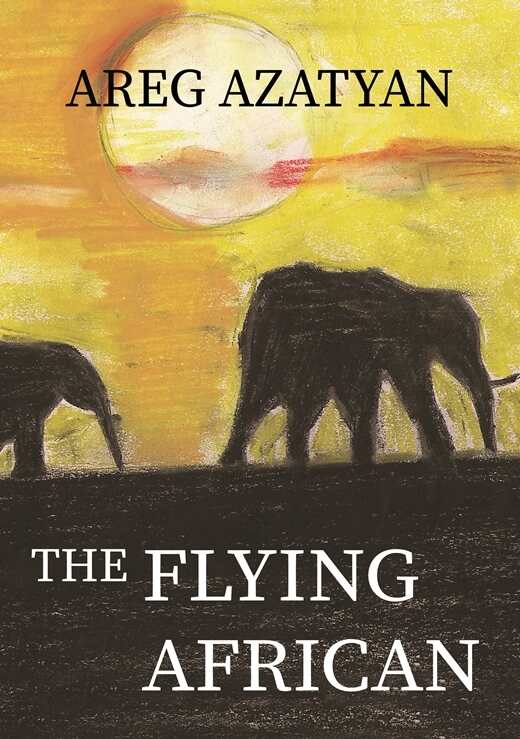The Flying African
Self-consciously “phantasmagoric and allegorical,” this ambitious novel revels in a wide-eyed traveler’s surreal trek across all of Africa’s nations.
Acquiescing to the outlandish is obligatory in Areg Azatyan’s epic adventure novel The Flying African, in which an ambitious Armenian writer goes on excursions to Africa’s fifty-four countries.
From Mauritania in the north to Botswana in the south, from Sierra Leone in the west to Eritrea in the east, the unnamed traveler spends one day visiting each country. He endeavors to experience African life, hoping to include his observations in his future novel. Still, this journeying begins with trepidation. He’s wary of disillusionment should Africa not fulfill his expectations and is concerned about how he will communicate with people given that he speaks only Armenian and a smattering of English and Russian.
As the traveler crisscrosses the continent, he witnesses Africa’s continued struggles against poverty, colonization, war, and disease. He meets villagers and locals who are beset by persistent sorrow. This darkness weighs on him. Twenty-eight days into his travel, in the Democratic Republic of the Congo, he’s tormented, saying that the sadness “wrapped itself like a snake around my throat and was not letting me go … what was the point of seeing all this suffering, and suffering myself?”
Self-consciously “phantasmagoric and allegorical,” the text devotes a chapter to each day of the traveler’s trip. They’re entries marked by a sense of unendingness and by surreal events that represent a striking range of experiences. These variations are tempered by the book’s use of informative footnotes—used to define foreign-language terms, explain ethnic and folkloric beliefs, and detail Africa’s historical and geopolitical complexity. These flesh out the book’s intense imagery in an inventive way, capturing and complicating the sites the traveler visits; herein, people, places, and objects are and are not what they seem to be. In time, the traveler begins to adore Africa.
Still, the traveler’s “bizarre and mystical” adventures blur the lines between reality and imagination. Absurdist circularity characterizes his experiences, and the book builds on narrative happenstance that often flouts expectations. For example, when in Libya, the traveler rides a train, accompanied by another man; he falls asleep, and when he wakes, he’s in a Mercedes and is told that there was no other man and that trains have not operated in Libya since 1965. Further, in Tunisia, the traveler misplaces the crocodile-skin bag he just purchased; his hotel doorman insists that the traveler is confused, telling him that such bags haven’t been made in Tunisia for more than twenty years. And in Equatorial Guinea, the traveler descends from a ship, then realizes he left his belongings on board. He asks a stranger for help and is told that there are no ships or ports in Equatorial Guinea. These encounters are ambiguous and unresolved, yet immersive, inviting audiences into vicarious wonder.
The Flying African is a magical novel in which a traveling man encounters Africa’s cultures and vibrancy, one nation at a time.
Reviewed by
Amy O'Loughlin
Disclosure: This article is not an endorsement, but a review. The publisher of this book provided free copies of the book and paid a small fee to have their book reviewed by a professional reviewer. Foreword Reviews and Clarion Reviews make no guarantee that the publisher will receive a positive review. Foreword Magazine, Inc. is disclosing this in accordance with the Federal Trade Commission’s 16 CFR, Part 255.

